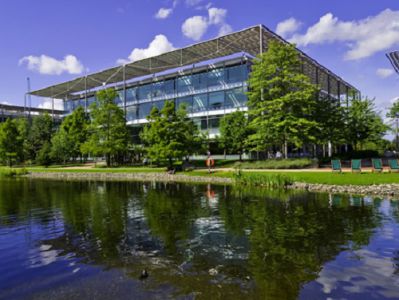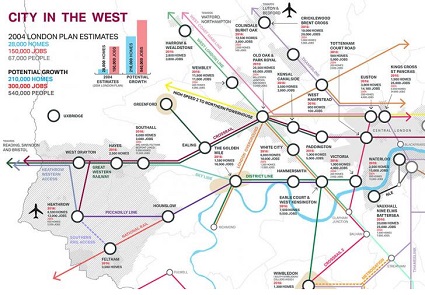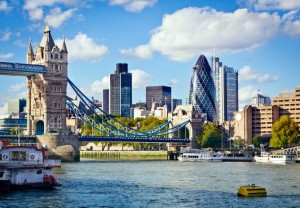London Office Space Market
Q2 2016 ended on a note of uncertainty due to the unexpected result of the Brexit vote. Researchers suggest that the vote had a direct effect on the activity levels of the London office market, although the effects were far from dramatic given that most of the transactions in the local market consisted of pre-lets deals that had been completed before the referendum. On the whole, the third quarter of 2016 has been characterised by the ongoing decrease in the availability of Grade A space. Citywide, vacancy rates are considerably lower than the decade’s average at just over 4 per cent. The only office sub-markets where availability levels are above 5 per cent are Clerkenwell, Holborn, and St James. By the end of the year, it is expected that approximately 4.6 million square feet will be delivered across London, which may bring a temporary relief to the tight supply-demand ratio (1).
Following the Brexit vote most investors have taken a cautious approach, as they have decided to put decisions on hold to evaluate how current market conditions will play out in the short and medium term. As a result, there have been no changes in yields when compared to the previous quarter, staying at around 4 per cent citywide and 3.25 per cent in the West End (2). However, some have suggested that further investments may be hindered in the near future based on the evolution of UK-EU relations, as it may become harder for investors to borrow funds and obtain credit and this could lead to a drop in overall investment volume (3).
During Q3, prime office rents have remained mostly unchanged in the majority of office sub-markets, averaging £70 / square foot in the City and £125 / sq ft in the West End. The priciest rental values could be found in Mayfair, St James, Marylebone, Knightsbridge, whereas the lowest apply to properties in the Docklands, Chiswick, Aldgate, and Shoreditch. On the whole, rental growth is expected to flatten until the end of the year, although demand may tighten up in areas like Fitzrovia, Soho, Noho, and the City, where total occupational costs are likely to reach £114 / square foot by 2018. In fact, the only sub-markets where total occupational costs may remain below the £100 / sq ft mark are Aldgate and Canary Wharf. The biggest rental value fluctuations on a year-on-year basis apply to office properties in Canary Wharf, the Eastern City Fringe, Hammersmith, and King’s Cross (4).
The most notable deals within the office market involved properties in Canada Square, Cannon Street, Holborn, King’s Cross, and Victoria. Take-up volume was at its highest in the City, with 43 per cent of the total, followed by the West End (27 per cent), Docklands (12 per cent), Midtown (11 per cent), and to a lesser extent, in Southbank and Hammersmith (5).
London Retail Market
According to some market analysts, the depreciation of sterling with respect to the euro and other foreign currencies has been somehow beneficial to the retail sector in London, and especially in central London due to the area’s traditionally high tourist footfall levels. During the third quarter of the year, there has been a surge in expenditure in shops, restaurants, and hotels, partly due to the onset of the summer season (6). West End retailers have been largely unaffected by the Brexit vote, as more than 60 per cent of all shoppers in this area are international visitors, although it is still unclear how domestic consumer confidence will be affected in 2017 and beyond (7).
During the month of August, prime retail rent records were broken following the deal signed by Spanish retailer Desigual for a property in Oxford Street. This transaction’s value reached £1.5 million (or £700 / sq ft / year), a figure that is significantly higher than the area’s average at £575 / sq ft / year (8). Luxury retail locations within Central London remain attractive to foreign investors. The most important retail deal of this quarter involved the sale of a 50,000 square feet building in New Bond Street for nearly £200 million (9).
Investment yields for retail properties remain stable, ranging between 4 and 5 per cent for prime retail and shopping centre properties (10).
Industrial Market
Throughout Q3, the industrial property sub-market within the Inner M25 continued to perform strongly, mainly due to robust demand and limited supply of standard industrial properties and distribution warehouses. The main industrial property hotspots are near Heathrow and in parts of Greater London like Croydon, where multi-let and big box units continue to be in high demand thanks to the strong performance of the e-commerce sector. Average prime rents for industrial properties in industrial parks near Heathrow reached £14 / square foot / year, which represents an increase of nearly 8 per cent over last year’s figures. In Croydon, rental rates for standard industrial properties average £11 / square foot / year, and in the rest of Greater London prices remain stable or have only experienced modest increases.
Market analysts predict that in the short term, rising investment returns are likely to turn the industrial sector into the best performing of all sub-markets. According to the forecast, yields for industrial properties within the M25 may exceed 7 per cent by 2020, as many of them are already returning yields of nearly 6 per cent. It is also expected that sterling devaluation will result in the growth of export manufacturing activities, which in turn will have a direct impact on the local industrial property market (11).
Sources:
(1) http://www.cbre.co.uk/uk-en/research
(2) http://www.cushmanwakefield.co.uk/en-gb/research-and-insight/uk/united-kingdom-office-snapshot/
(3) http://www.savills.co.uk/research_articles/173552/205429-0
(4) http://www.colliers.com/-/media/files/emea/uk/research/offices/201605_londontechmarketmonitor.pdf?la=en-GB
(5) http://www.cluttons.com/sites/default/files/documents/london-office-market-bulletin-summer-2016.pdf
(6) https://www.theguardian.com/business/2016/sep/23/spending-by-visitors-to-uk-tourism-rose-2-per-cent-in-july
(7) http://pdf.euro.savills.co.uk/uk/commercial-retail-uk/the-impact-on-the-uk-retail-market-21-july-2016.pdf
(8) http://www.independent.co.uk/news/business/news/oxford-street-shop-rents-shattered-by-record-deal-with-spanish-retailer-2058627.html
(9) http://www.propertyweek.com/news/oxford-properties-and-richemont-buy-new-bond-street-property-for-%C2%A3198m/5085320.article
(10) https://kfcontent.blob.core.windows.net/research/103/documents/en/q3-2016-4074.pdf
(11) http://www.colliers.com/-/media/files/emea/uk/research/research%20and%20forecasting/201609_reifq3.pdf?la=en-GB






